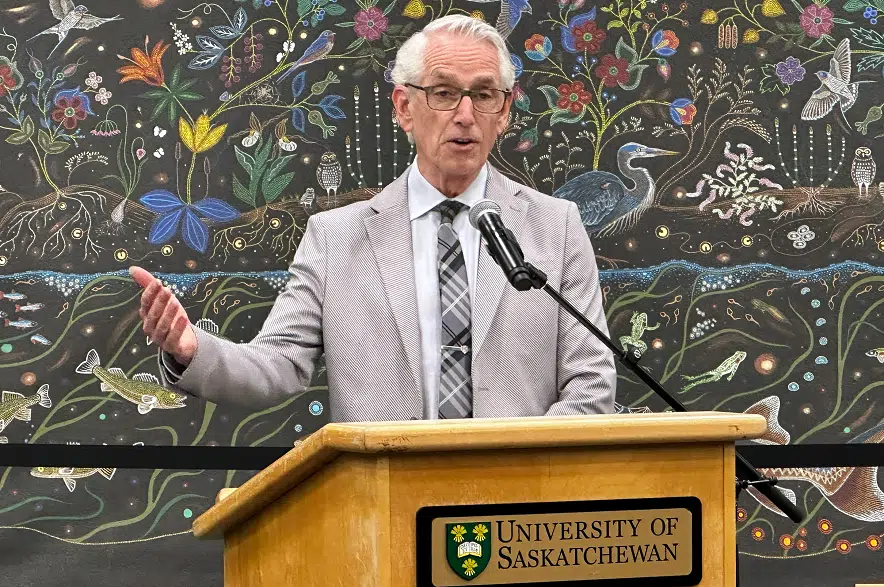The University of Saskatchewan has officially kicked off a massive fundraising campaign.
Peter Stoicheff, the university’s president, said the $500-million campaign is the largest the university has ever embarked on, and also the largest seen in the province.
“It represents our ambitions to be a university that stands for excellence,” he said. “We’re being deliberately ambitious (and) courageous in that goal.”
Stoicheff said he feels the “ambitious” goal is achievable, given the university’s 170,000 alumni around the world and the support the school receives for its problem-solving research and work to enrich the student experience.
The origin of the campaign dates back to 2015, though it is only now being publicly announced. Stoicheff said the campaign’s beginning coincided with the start of his presidency.
So far, more than $322 million — 65 per cent of the campaign goal — has been raised as part of the “quiet” phase of the campaign.
Cheryl Hamelin, vice-president of university relations, said those funds have come from alumni, corporations, community stakeholders, foundations and families to support the four pillars of the campaign.
Those pillars encompass critical research performed by the university, student support in the form of bursaries, scholarships and physical and mental health supports, Indigenous achievement, and funding for places and spaces on campus.
Hamelin said money raised by the campaign is already being used to fund research chair positions, scholarships and renovations, as well as activities supporting Indigenous excellence and achievement.
Referring to reconciliation work the university has undertaken, Stoicheff said he is proud for the U of S to be “contributors, not bystanders” in the “greatest cultural opportunity that the country’s ever faced.”
Such efforts have included scholarships and support for Indigenous students transitioning into or already involved in academic success.
As a university bearing the province’s name, Stoicheff said a commitment to Indigenous achievement is especially important for the University of Saskatchewan.
Other areas where funding will be directed include a new engineering building and work on the university’s Prince Albert and Emma Lake Kenderdine campuses.
Sarah Wood is an associate professor and a research chair in pollinator health — a position funded by donations to the campaign.
She said she’s thankful to the donors for allowing her to continue her research, which focuses on bacterial diseases affecting honey bees and antibiotic use to control them, as well as the effects of pesticides on bees.
Walter Siqueira, dean of the College of Dentistry, said the support from the campaign means a lot and presents an opportunity for the faculty to be a leading dentistry school in Canada. Presently, he said the college is the only dentistry program in Canada to have certain simulator technology used to help train students.
Siqueira said this type of technology and the excellent faculty helps attract leading students to the program.
For Libby Epoch, a U of S civil engineering student and former Huskies basketball player, scholarships and donations have been a significant part of her time and achievements at the university.
“I have been so fortunate to receive the benefit of these supports, and I think the more students that these benefits can reach, that just creates thousands of more grads who are employable, who are educated (and) who are excelling in their field,” Epoch said.
Hamelin said the university is hoping to achieve its financial goal by June 2025.
–Editor’s Note: This story has been updated to correct the spelling of Hamelin’s name.











